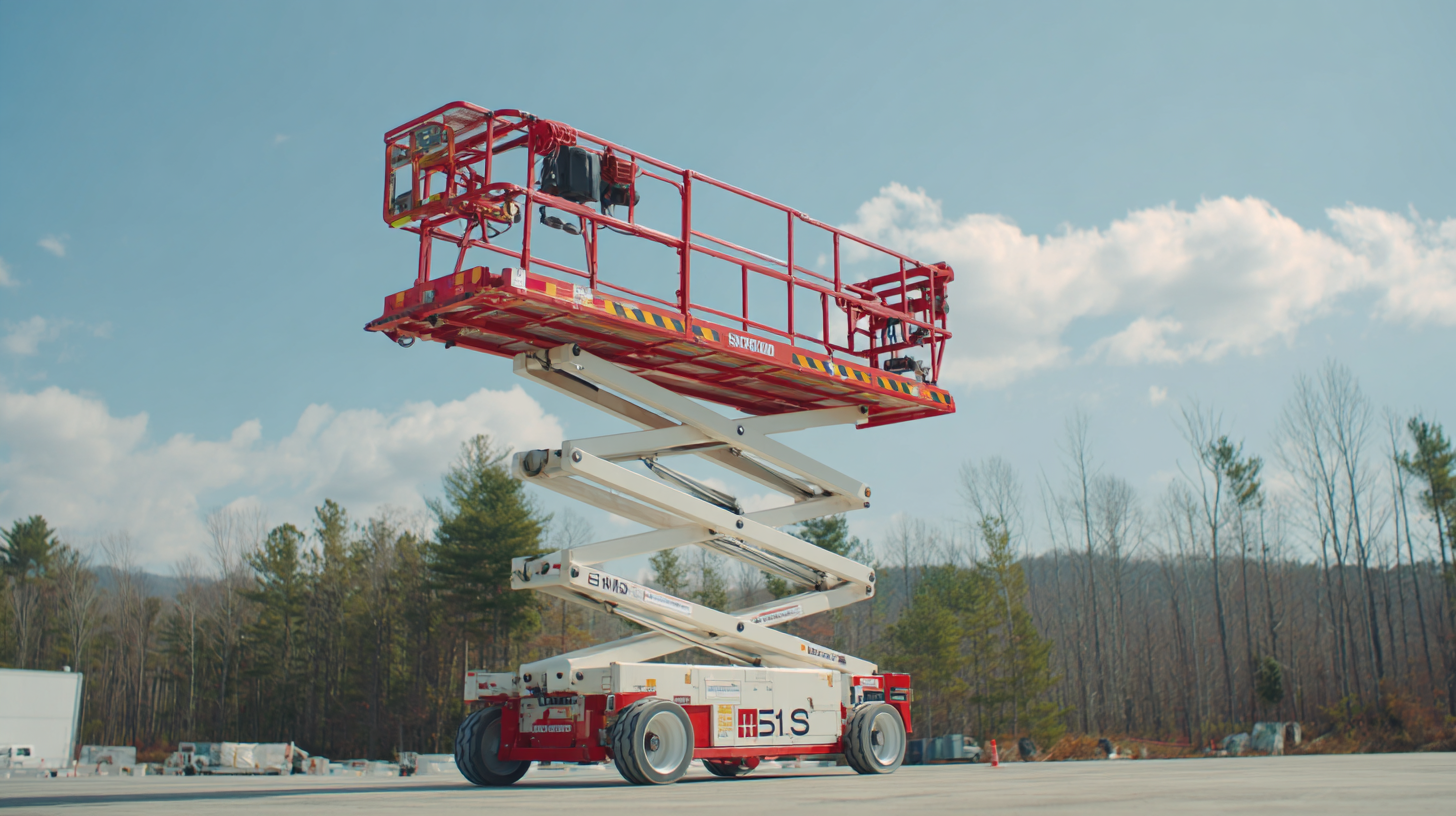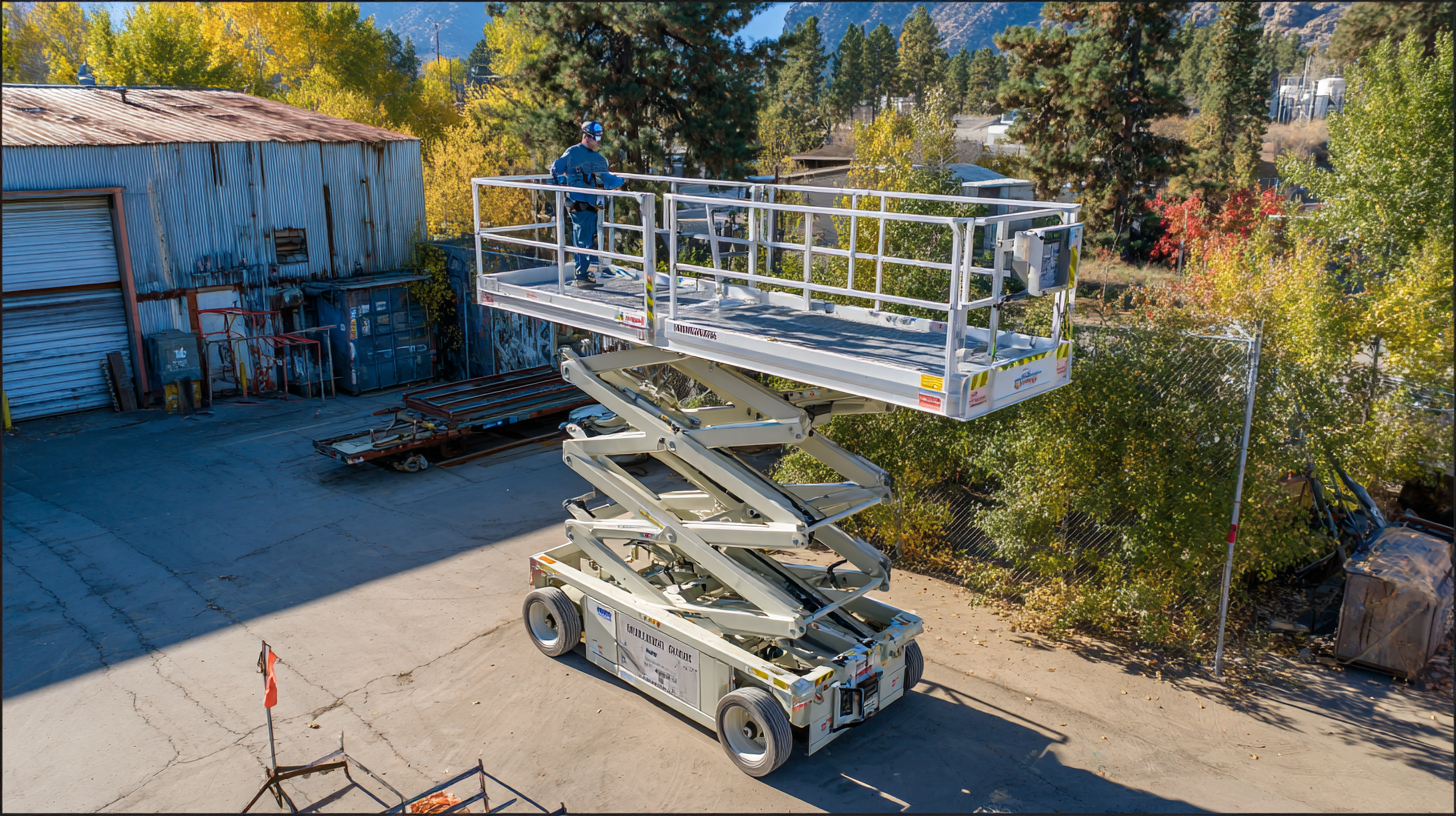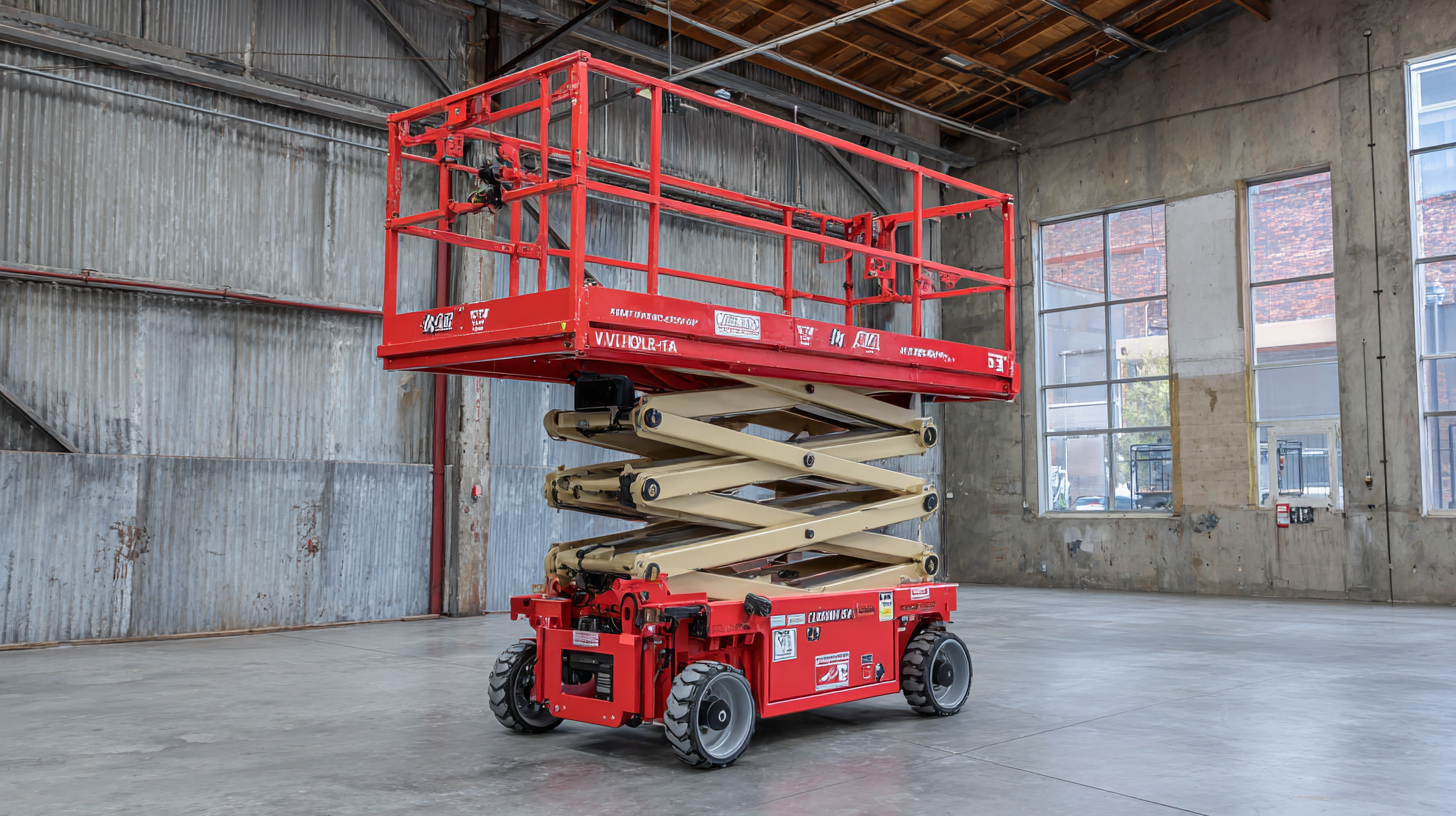5 Key Features to Consider for the Best Mobile Aerial Work Platform
In the realm of construction and maintenance, the demand for efficient and versatile equipment has led to the rise of Mobile Aerial Work Platforms (MAWPs). According to a report by Research and Markets, the global market for aerial work platforms is projected to reach USD 15.3 billion by 2025, with a compound annual growth rate (CAGR) of 6.3%. This growth reflects the increasing need for safe and efficient lifting solutions across various industries, including construction, telecommunication, and maintenance. As organizations seek to enhance productivity while ensuring worker safety, selecting the right Mobile Aerial Work Platform becomes crucial. This blog will explore five key features that are essential for choosing the best MAWP, taking into consideration the evolving demands of today's work environments and the latest technological advancements.

Key Insights on the Mobile Aerial Work Platform Market Trends by 2025
As the mobile aerial work platform (MAWP) market continues to grow, understanding the key trends shaping its future by 2025 is essential for industry stakeholders. One prominent trend is the increasing demand for eco-friendly aerial solutions. Manufacturers are focusing on electric and hybrid models to reduce carbon footprints and comply with stringent environmental regulations. This shift not only reflects global sustainability goals but also caters to companies looking to enhance their green credentials.
Additionally, advancements in technology are revolutionizing MAWP design and functionality. The integration of smart technologies, such as IoT and AI, allows for improved safety features and remote monitoring capabilities. These innovations help operators maintain equipment more efficiently, ensuring uptime and operational safety. As construction and maintenance industries evolve, embracing these technological advancements will likely become a critical factor for businesses aiming to stay competitive in the market. Consequently, understanding these trends is vital for making informed decisions about investment and procurement in the ever-evolving mobile aerial work platform landscape.

Top 5 Features to Enhance Safety in Mobile Aerial Work Platforms
When selecting the best mobile aerial work platform, safety should be the ultimate priority. Mobile aerial work platforms can pose significant risks without proper safety features in place. One of the foremost features to consider is a robust safety harness system. A quality platform should include easily adjustable and comfortable harnesses, allowing operators to secure themselves effectively while working at heights.
Another crucial safety feature is the presence of an emergency lowering mechanism. This system ensures that in case of power failure or any operational issue, the platform can be safely lowered to the ground. Operators should look for platforms that provide manual override options, allowing for rapid response in emergencies.
Visibility is also an essential aspect of mobile aerial work platform safety. Platforms equipped with bright LED lights and reflective materials can greatly enhance operator and ground crew visibility, especially in low-light conditions. Additionally, incorporating sensors for proximity detection can prevent accidents by alerting operators of nearby obstacles. Always ensure that your mobile aerial work platform integrates these key safety features for a secure working environment.
Evaluating Performance: Load Capacity and Reach of Aerial Platforms
 When selecting the best mobile aerial work platform, evaluating the performance based on load capacity and reach is crucial. Load capacity refers to the maximum weight the platform can safely support, including both personnel and equipment. Understanding this metric ensures that the aerial platform can cater to your specific needs without compromising safety or efficiency. Always check the manufacturer's specifications and opt for platforms that exceed your expected requirements to accommodate any additional tools or materials you might need.
When selecting the best mobile aerial work platform, evaluating the performance based on load capacity and reach is crucial. Load capacity refers to the maximum weight the platform can safely support, including both personnel and equipment. Understanding this metric ensures that the aerial platform can cater to your specific needs without compromising safety or efficiency. Always check the manufacturer's specifications and opt for platforms that exceed your expected requirements to accommodate any additional tools or materials you might need.
Reach is another vital feature that directly influences the platform's usability in various work environments. This includes both horizontal and vertical reach, determining how far the platform can extend to access high or distant areas. To maximize productivity, consider platforms that offer adjustable height and lateral movement capabilities. This versatility allows for seamless operation in challenging spaces, such as construction sites or maintenance tasks.
Tip: When assessing load capacity, remember to account for the weight of all equipment and personnel. It's wise to keep a buffer to prevent accidental overload.
Tip: For optimal reach, consider the terrain and work conditions where the aerial platform will be used. Platforms with stabilizers or outriggers provide better stability and extend reach in uneven or sloped areas.
Understanding Technological Advancements in Mobile Aerial Work Platforms
As mobile aerial work platforms (MAWPs) evolve, understanding the technological advancements that define their efficiency and safety becomes essential. One of the most significant developments is the incorporation of advanced control systems, which allow operators to maneuver these platforms with remarkable precision. Features such as joystick controls and automated leveling systems enhance user experience by simplifying operation, making it less daunting for inexperienced users while increasing safety during aerial tasks.
Another noteworthy advancement is the integration of hybrid power systems, combining traditional fuel sources with electric options. This innovation not only reduces the carbon footprint of these machines but also offers greater operational flexibility in various environments. Furthermore, advancements in IoT (Internet of Things) technology enable real-time monitoring of machinery performance and diagnostics, allowing for predictive maintenance. With these technologies, companies can optimize their fleet management and minimize downtime, ensuring that equipment is always ready for use when needed.
5 Key Features to Consider for the Best Mobile Aerial Work Platform
Cost-Benefit Analysis: Investment in High-Quality Aerial Work Platforms
When considering the investment in a mobile aerial work platform, a thorough
cost-benefit analysis is crucial. High-quality aerial work platforms
may initially require a larger financial outlay, but their long-term benefits
often outweigh these initial costs. Key elements to assess include the platform's
durability, safety features, and
maintenance costs. A reliable model can significantly reduce
the risk of accidents, leading to fewer injuries and lower insurance premiums, which ultimately contributes
to a safer work environment and cost savings over time.
Moreover, investing in advanced technology can enhance
operational efficiency. Platforms equipped with features such as improved reach, ease of maneuverability, and
energy-efficient power sources can result in faster job completion, minimizing labor costs. In addition, the
adaptability to various job sites can lead to increased productivity, allowing companies to take on more projects.
By carefully weighing these factors, businesses can make informed decisions that not only safeguard their workforce
but also align with their financial goals.
